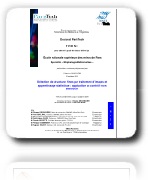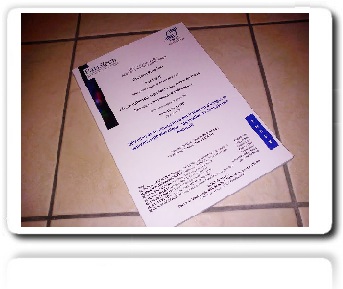Détection de structures fines par traitement d’images et apprentissage statistique : application au contrôle non destructif

References
Vincent Morard,
Centre de Morphologie Mathématique
Mathématiques et Systèmes, MINES ParisTech;
35, rue Saint-Honoré, 77305 Fontainebleau CEDEX - France
Directors : Petr Dokladal,
Etienne Decencière


Abstract
This PhD is dedicated to new image processing methods to extract or enhance thin objects from an image. These methods stem from mathematical morphology, and they mainly focus on the accuracy of the detection and on the computation time. This second constraint is imposed by the fact that we are dealing with high-throughput applications. The first part of this thesis presents these methods, organized according to the tortuosity of the objects to detect. We first propose a fast algorithm for the computation of 1-D openings, used to extract thin and straight structures in the images. Then, we study a new class of fast operators, parsimonious path openings, which can extract thin structures with moderate tortuosities. Finally, we propose new adaptive structuring elements and new thinnings with geodesic and geometric attributes to filter out the noise and to enhance thin structures of any tortuosity.
Besides, we have developed a machine learning method by introducing a new adaptive penalization. We aim at creating a predictive model that minimizes a cost function (independent of the data) while preserving a good accuracy. When this cost function is linked to the computation time of each feature, the resulting models will optimize the timings, while preserving a good accuracy. This method is a generalization of linear and logistic regressions with Ridge, Forward stagewise, Lar or Lasso penalization.
The algorithms developed in this thesis have been used for three industrial applications. While their objectives are very different, the framework is the same (non-destructive testing) and they all involve multidisciplinary approach (images processing and statistical analysis). The combination of these two fields yields a higher flexibility in comparison with classical methods. Generic strategies are used, since image processing operators are associated to statistical learning (supervised or unsupervised) to make a specific treatment for each application.
Thesis

Presentation







